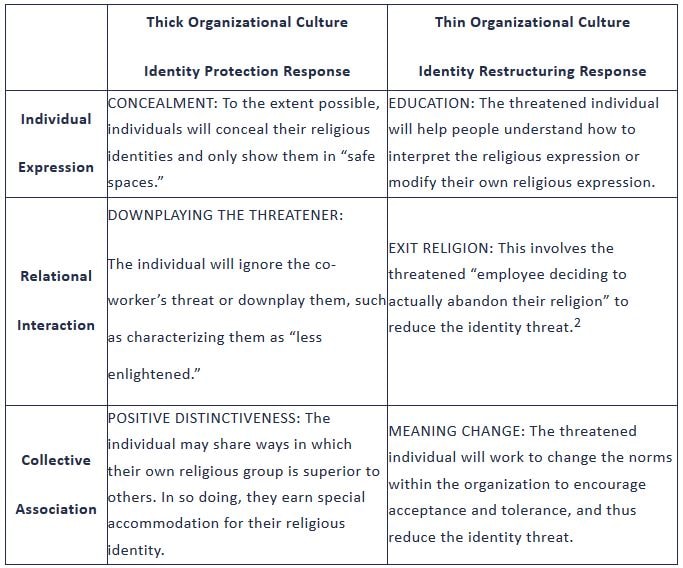Cat or Meerkat culture? Religious identity threats at work
Being able to bring and express one's various identities at work allows us to build relationships with others around us and nurture a sense of belonging within our work group


 Image: Shutterstock [br]From the moment we walk in the door for a new job, we all bring our identities with us. Each of us has many facets of our identities: enduring Boston Red Sox fan. Parent. Religious affiliation. And many more. Being able to bring and express one’s various identities at work allows us to build relationships with others around us and nurture a sense of belonging within our work group.
Image: Shutterstock [br]From the moment we walk in the door for a new job, we all bring our identities with us. Each of us has many facets of our identities: enduring Boston Red Sox fan. Parent. Religious affiliation. And many more. Being able to bring and express one’s various identities at work allows us to build relationships with others around us and nurture a sense of belonging within our work group.
This connection and belonging have positive emotional benefit for individuals. At the same time, feeling that we’ve been rejected because part of our identity is unwelcome at work threatens our connection with others and the organization. Being the only Red Sox fan in an office of Yankees fans is one kind of experience, but it is something that we come to expect at times. Feeling like one is stigmatized for one’s religious identity is a very different kind of experience.
Two Darden faculty members, Morela Hernandez and Andrew Wicks, along with their co-author, Hana Johnson, have developed a theoretical framework to think about how people respond when they feel their religious identities are threatened at work. The researchers argue that to understand how people will respond, one needs to understand the organizational culture in which the identity threat happens.
THICK AND THIN ORGANIZATIONAL CULTURE
Drawing on previous scholarship, Hernandez, Johnson and Wicks highlight two kinds of organizational culture: thick and thin. Thick cultures have strong, shared beliefs, values and attitudes that encourage people to conform to common expectations and practices. This kind of binding culture can build loyalty in and provide meaning to employees, and can help ensure that all members of the organization are aligned to the mission. The authors provide the example of a meerkat colony as an analogy for how thick cultures enable employees to work together toward a single goal.
Thin cultures have a shared set of core values, but in contrast to thick cultures, thin cultures allow for greater individual expression and variability. Organizations with thin cultures “display greater flexibility and adaptability to changing conditions and distinct stakeholders.”1 As such, they are characterized by tolerance that can appeal to a wide variety of stakeholders. Where thick culture can be compared to a meerkat colony, thin organizational culture is better compared to a group of independent-minded cats.
RELIGIOUS IDENTITY AND ORGANIZATIONAL CULTURE
Thick and thin organizational cultures create different experiences for employees. As a result, these cultures tend to have different effects on how people respond when they feel their religious identities are threatened at work.
One does not need to belong to an institutionalized religion — e.g., Buddhism, Christianity, Islam — to feel that one’s religious identity has been threatened. A threat happens when one feels rejected or stigmatized based on one’s religious identity. This could be a co-worker making a negative comment about one’s religion. Or it could be when a non-religious individual is on the receiving end of a religious co-worker’s attempt to proselytize. As a result, even people who profess no religious affiliation — atheists and agnostics — can experience a threat to religious identity.
This threat leads to different employee reactions. In thick cultures, people are most likely to deploy an identity-protection response, through which they affirm and protect their religious identity without changing it. In contrast, in thin cultures, people are more likely to respond to a religious identity threat with a restructuring response, in which they adjust the meaning of their religious identity.
Depending on different elements of the culture — individual-level expression, interpersonal interactions or collective associations — Hernandez, Johnson and Wicks predict that people will respond in the following ways:The culture of an organization influences employee retention and access to talent in the market. As a result, it is important that organizations understand how individuals within their ranks respond to religious identity and how to support all employees in these moments. Hernandez, Johnson and Wicks hope their research will “spark new understanding” of how employees experience their religions at work and how organizations can “foster the productive expression of those beliefs.”
Morela Hernandez and Andrew C. Wicks co-authored “Responses to Religious Identity Threat in Thick and Thin Cultures,” a chapter in Business Ethics: Perspectives, Management and Issues, with Hana Johnson of Washington State University.
This article was developed with the support of Darden’s Institute for Business in Society, at which Andrew C. Wicks is an academic director and Megan Juelfs is associate director of research initiatives.
First Published: Jan 05, 2021, 09:32
Subscribe Now